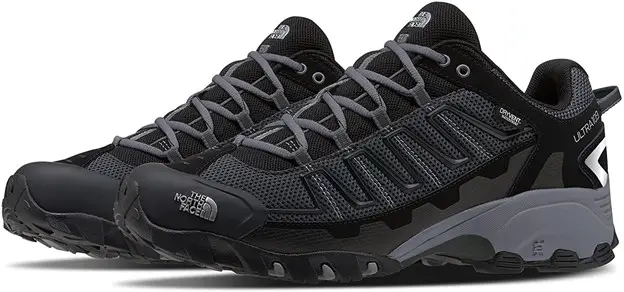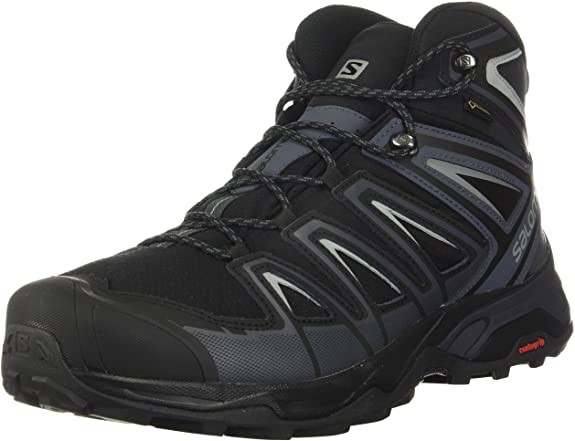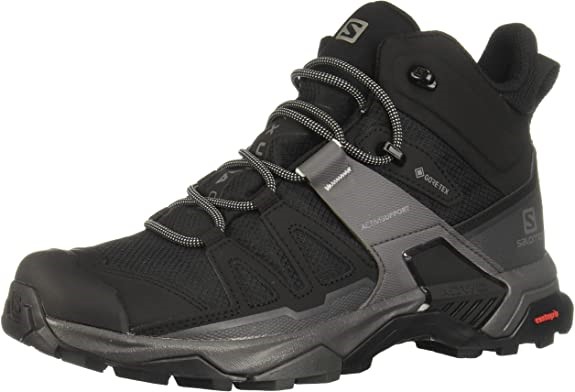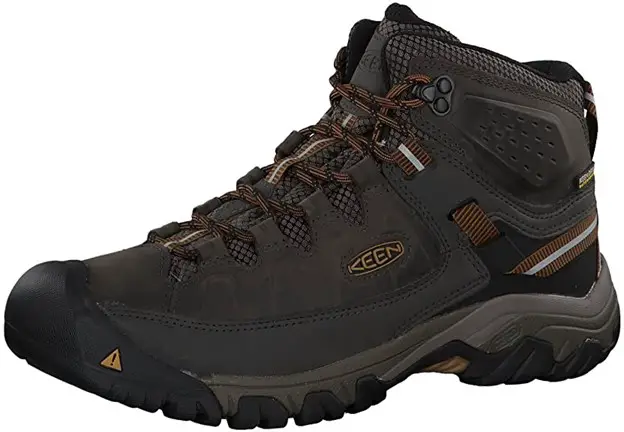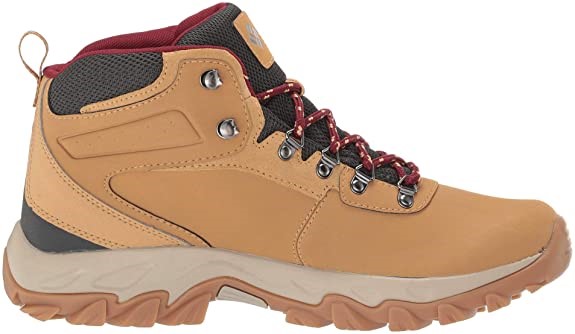When you’re hiking, the last thing you want is your foot to be slipping around in your shoe.
That’s why it’s important to choose the right type of hiking boot for the terrain you’ll be traversing. But how to choose the appropriate footwear for your next hike?
When it comes to boots, there are two main options: high-cut or low-cut hiking boots. If you’re going on a relatively easy hike, a mid-cut hiking boot should do the trick. These boots come up to just below the ankle, providing plenty of stability and support.
However, if you’re planning on doing some tougher hikes – ones with rocky terrain or steep inclines – you’ll want to go with a low-cut hiking boot instead.
So which is better for you? To help you decide, we have curated this comprehensive guide about the pros and cons of each.
We will be discussing the key difference between the two, so you can find a pair that best suits your needs.
Low-Rise Boots
Low-cut hiking boots just come below the ankle and are ideal for everyday hikes.
Pros:
- More flexible and agile than mid-cut hiking bootss
- Offer more protection against water and debris than trail runners
- Often cheaper than mid-cut hiking
- Versatile and are appropriate for a variety of hikes
- Breathable, so the feet don't sweat when it's hot
- Quick to dry
- Less break-in time
- Lightweight so can be carried around easily
Cons:
- Leave the ankle exposed to the elements (bushes, animals, and stones)
- Less sturdy
- Fewer feet and ankle support
- Not ideal for intense hikes with rough terrain
When To Use Low-Rise Boots
These hiking boots are ideal for short hikes with well-maintained trails and day trips. We would not recommend using them on trails with rocky terrain as they don’t provide enough ankle support.
"This can increase the risk of injury in case you roll your ankles."
Moreover, as they only cover below the ankle, so avoid wearing them on wild hiking trails with thorny bushes or insects. One of the benefits is that they’re sleek and lightweight, so they’re great for when you want a fast hike.

If you are going for a hike in the desert where you will be exposed to high heat and scorching sun then, low-rise hiking boots make the most appropriate choice. As these are often breathable and will keep your feet cool and dry from sweat.
However, we don’t recommend using them on long hikes where you will be carrying heavy backpacks loaded with your camping gear.
But for day hikes when you will be carrying a lightweight backpack, low-rise hiking boots make the perfect companion.
Best Low Rise Boots
Here are a few recommendations for the best low-rise hiking boots on the market.
1. The North Face Ultra 109 GTX Hiking Boot
A great option for hikers who are looking for a durable and comfortable hiking boot. This boot is made with suede and mesh, which makes it lightweight and breathable. It also has a Gore-Tex membrane, which makes it waterproof.
The North Face Ultra 109 GTX Hiking Boot is also equipped with a Vibram Megagrip outsole, which provides excellent traction on wet and dry surfaces.
If you're looking for a great hiking boot that will keep you comfortable on your next hike, the North Face Ultra 109 GTX Hiking Boot is a great option to consider.
2. Solomon X Ultra 3 GTX
The Solomon X Ultra 3 GTX hiking boots are some of the lightest on the market, making them perfect for day hikes.
They also have great traction, which is important when you're navigating uneven terrain. Plus, they're stylish enough to wear around town even when you're not hitting the trails.
If you're looking for a versatile pair of hiking boots that will keep your feet comfortable all day long, the Solomon X Ultra 3 GTXs are a great option.
The Gore-tex lining provides maximum resistance against water keeping your feet extra dry.
Be it a hiking trip or a casual BBQ evening with friends, these boots make the perfect choice for a variety of settings.
3. Merrell Moab 2 Ventilator
If you are looking for a versatile and affordable hiking boot, the Merrell Moab Mid is a great option.
They have a breathable mesh lining that helps keep your feet cool and are designed for maximum airflow, making them perfect for summer hikes.
This boot is perfect for moderate hikes and walking, and it can also handle light trails. The Moab Mid has Vibram soles that provide great traction, and the leather uppers are durable and water-resistant.
If you are looking for an all-around hiking boot that won’t break the bank, the Merrell Moab Mid is a great option.
Summary
If you often hike in warmer climates with smooth terrains, then low-rise hiking boots are a perfect choice for you.
For individuals looking for minimalist, light-weight boots that can be worn on most trails, these boots are a great choice.
Mid-Rise Boots
Because of their stability and support, mid-cut hiking boots are a good option for difficult hikes and backpacking trips
Pros:
- Sturdy and durable
- Provides extra support to ankle and feet
- Protects the ankles against the outside environment
- Do not let dirt and pebbles enter the shoes
- Ideal for rough and uneven terrain
- Provides warmth in colder weather
- Extra Stability
- Keeps feet dry when walking through puddles
Cons:
- Could be on the dear side
- More break-in time
- Heavy and bulky
- Not suitable for warmer climates
When To Use Mid-Rise Boots
High-rise hiking boots are recommended for those who are planning to hike in rough terrain. They offer more support and protection than low-rise hiking boots, and they also keep your feet warmer in cold weather conditions.
Additionally, the main advantage of these boots is the added ankle support they provide which can be quite helpful while carrying a heavy backpack.
Since these boots raise your center gravity, they help you keep your balance while climbing up a mountain with a loaded backpack.
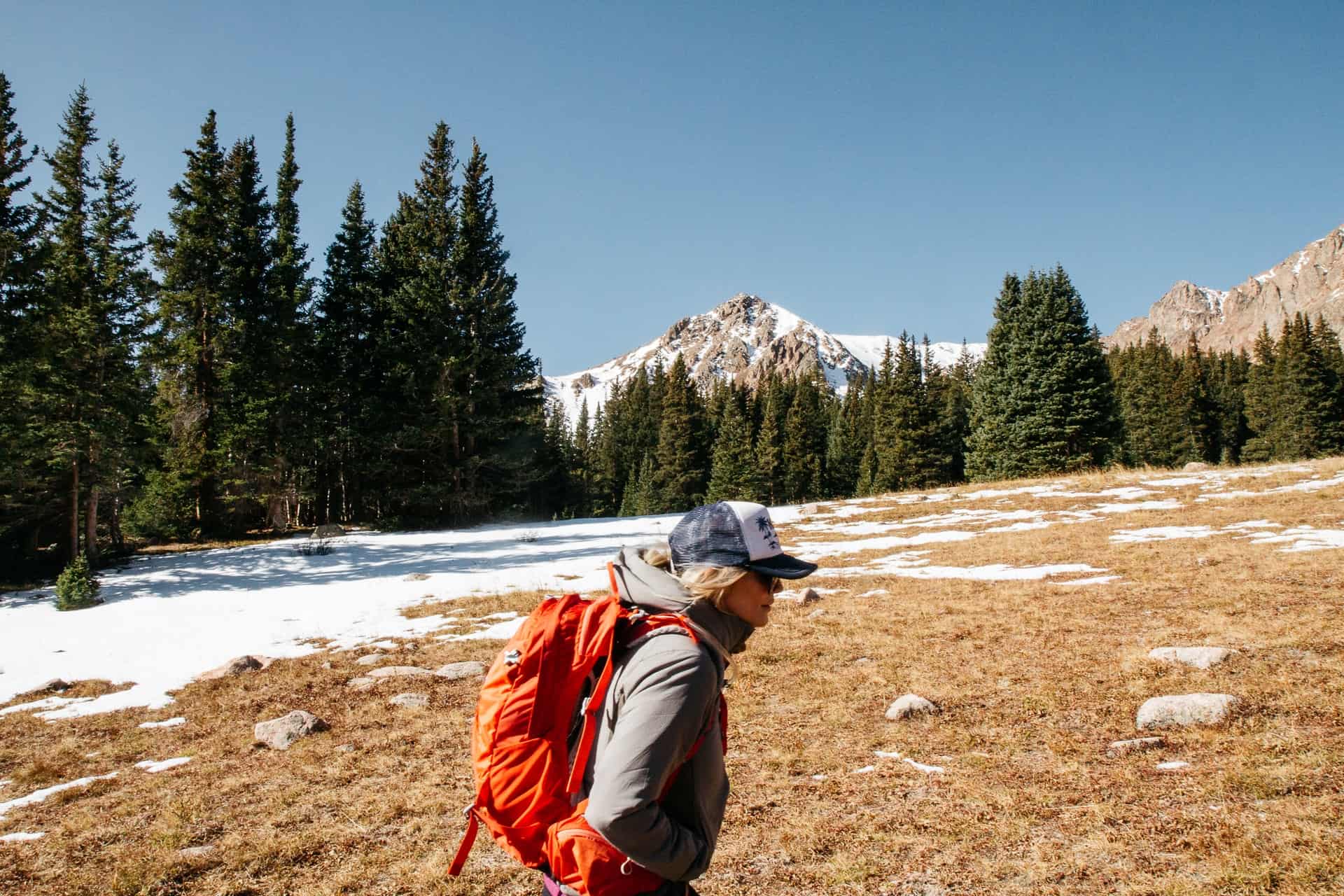
If you are planning to for a snow hike then these boots are ana essential as they protect your ankles from the cold now. Furthermore, they also help you keep your feet warm in colder climates.
If you like to explore the off-beaten paths and venture into the deep forests, then mid-rise boots reduce the risk of cuts and bruises.
For example, if your hiking trail includes a steep path where you might have to climb rocks, boots that go above your ankles, can provide extra traction and prevent bruises caused by your ankles rubbing against the rocks.
If you know that you will encounter a waterfall on your hike or come across a puddle of water, or expect the trail to be muddy due to recent rainfall, in that case, mid-cut hiking boots will also prevent your feet from getting wet.
If you’re looking for a boot that will give you good ankle support and cushioning, as well as keep your feet dry in wet conditions, then mid-rise hiking boots are the right choice for you.
Best Mid Rise Boots
These are our favorite mid-rise hiking boots:
1. Salomon X Ultra Mid 4 GTX Hiking Boot
Looking for a rugged pair of hiking boots? The Salomon X Ultra Mid 4 GTX Hiking Boot might be the perfect option for you!
This boot is designed with a Gore-Tex lining to keep your feet dry and has a durable construction that can handle any terrain.
Plus, the X Ultra Mid 4 GTX Hiking Boot features an Ortholite insole for extra comfort on long hikes.
If you're looking for a great pair of hiking boots, be sure to check these out. With Sensifit technology, they provide a snug, secure, and virtually customized fit from midsole to lacing system.
2. Keen Targhee III Mid
A very popular choice for day hikers, the Keen Targhee III Mid is a versatile and rugged shoe that can handle a variety of terrain.
It features a breathable, water-resistant upper and a cushioned midsole that provides plenty of support and comfort on long hikes.
The Targhee III Mid is also durable enough to withstand heavy use, making it perfect for weekend warriors and avid hikers alike.
If you're looking for a reliable and comfortable hiking shoe, these boots from Keen are worth considering.
Most importantly, these boots are manufactured using environmentally-suitable leather sourced from LWG-certified tanneries.
3. Columbia Newton Ridge Plus II
Lastly, the Columbia Newton Ridge Plus II is a great choice for those who are looking for a stylish and affordable hiking boot.
This option features Omni-Tech waterproofing to keep your feet dry, as well as Techlite midsoles for cushioning and energy return.
The boots also have mesh linings that help to keep your feet cool and comfortable on long hikes.
And if you're looking for a little extra style, the Newton Ridge Plus IIs come in several different colors, including black, brown, and red.
So, if you're looking for an affordable and stylish hiking boot, the Columbia Newton Ridge Plus II is a great option to consider.
Summary
If you are planning a hike to snowy mountains like the ones in Alaska, then a rugged pair of mid-rise hiking boots would be the best choice.
An ideal choice for those who prefer the support and are not bothered by their heavyweight.
Price Comparison
There is a common misconception that mid-cut hiking boots cost much more than low-cut boots. Sure, mid-rise boots are expensive, but the price difference between the two is not as extreme as you might expect.
A good pair of low-rise boots cost somewhere between $80 - $150 while mid-rise hiking boots range somewhere from $100 - $200.
As you can see the price difference is not as dramatic given the durability and the extra support mid-rise boots provide.
Buying Hiking Boots: Things To Consider
1. Terrain
When looking for hiking boots, it is important to keep in mind the type of terrain you will be hiking on.
If you are mostly hiking on groomed trails, then a pair of lightweight hiking boots should work well for you.
If you are going to be doing a lot of off-trail hiking or backpacking, then you will need a sturdier pair of boots that offer more ankle support.
2. Experience
If you hike very often and have plenty of experience mountaineering, then you might want to consider investing in a more expensive, heavy-duty pair of boots like mid-rise hiking boots.
But if you’re just starting, or if you’ll be hiking on rougher terrain, then you might want to choose a pair of boots that are a little more versatile such as low-cut boots.
3. Fitting
In terms of fit, it’s important to make sure that your hiking boots are snug but not too tight.
You should be able to wiggle your toes a bit, but they shouldn’t move around too much.
4. Intensity And Duration Of Hike
- Low-rise — One-day, easy, and shorter trails.
- Mid-rise — Longer trails that take days to cover, off-beaten tracks, and bumpy terrain.
5. Weather
If you are planning a hike in a cold-weather climate, you will need boots that are waterproof and insulated.
Mid-rise boots are specially made for cold weather conditions are typically heavier and have more insulation to protect from extreme climate.
On the other hand, for hotter and drier climates lightweight and breathable shoes such as low-rise hiking boots are most suitable.
Which Of These Boots Provides More Ankle Protection?
When it comes to buying footwear for hiking, it is important to consider the type of terrain you will be hiking on.
This helps you identify the boots that provide the right foot support for a comfortable and stress-free hike.
Although the answer to this question varies with each individual. For example, If you are an experienced hiker, who is aware of the correct foot placement even on rough terrain, then a pair of low-cut boots will do the job for you as well.
On the other hand, when you have a torn ligament, you're more likely to experience ankle sprains; in that case, a mid-rise hiking boot is better suited for even flat terrain.
But for the average person, mid-cut hiking boots offer more protection than their counterpart, i.e. low-rise boots.
Waterproof Hiking Boots
Unless you are venturing out to Death Valley National Park, where the climate is extremely dry and hot, waterproof hiking boots are somewhat a necessity.
Believe, you don’t wanna deal with wet socks inside the boots … for one it’s super uncomfortable and secondly, creates a breeding ground for bacteria.
Imagine, you are hiking up a forest, there is a high chance that you might come across a body of water or it might start raining.
You don’t want to disrupt your hike and wait for your shoes to dry. Especially if it’s raining, the humidity will delay the process of evaporation.
So if you have the means and can easily find a good pair of waterproof hiking boots within budget, then don’t hesitate.
In comparison, mid-rise boots offer more protection against water and mud than low rise due to their length. With the latter, there is always the risk of water entering the shoes from the ankles.
Tips for Buying Hiking Boots
Here are a few valuable tips to consider while buying hiking boots, be it mid or low-cut:
- Fitting matters a lot! It is often recommended to buy your hiking shoes a size bigger than your normal shoes, to make room for thick socks. So, while shopping, try the shoes with a pair of thick thermal socks.
- Moreover, tight shoes may cause pain to your feet and make you feel fatigued easily. So don’t forget to size up while shopping.
- Always prefer a pair with mesh lining to absorb the sweat. No one wants their feet slipping due to sweaty feet.
- Buy shoes that provide traction on rocky terrains.
- You can never regret getting waterproof hiking shoes, as the weather can be quite unpredictable in the wild.
- Keep your ankle strength and foot placement in mind while deciding.
- Be sure to break in your new boots before hitting the trails – this will help prevent blisters and other foot problems.
Where to Buy Hiking Boots
There are many places where you can buy hiking boots. But, it is important to find a good and reliable store from where you can purchase quality hiking boots.
Some of the best places to find hiking boots are outdoor specialty stores and sporting goods stores.
Department stores may also have a section for outdoor gear, where you may be able to find hiking boots. You can also check online retailers or local outdoor gear shops.
E-commerce platforms such as Amazon and Walmart have a huge collection of hiking boots. You can take advantage of their comparison feature to find the product that offers the most value.
In addition to this, the customer reviews on these platforms can help you make a better decision.
However, we recommend buying hiking boots from the local outdoor store as it gives you the freedom to try the product before buying.
Since hiking boots are on the dear side of the price spectrum, so make sure to buy the one that fits perfectly and checks all the marks.
Conclusion
In conclusion, both mid and low hiking boots have their advantages. It ultimately depends on the hiker’s preference and what they will be using the boots for.
Mid-rise hiking boots are perfect for travelers who want a versatile option that can be used in different settings, while low-rise hiking boots provide more stability and durability for hikers who plan to do more difficult trails.
We hope this blog has helped to clarify the differences between mid and low-rise hiking boots so that you can make an informed purchase decision when buying your next pair of hiking shoes.
No matter which type of boot is chosen, it is important to make sure that it fits well and provides comfort during long hikes.
There is no right or wrong answer here! It is all about finding the one that perfectly aligns with your needs and preferences.
Whatever hiking boots you choose, make sure you get out there and have some fun. So what are you waiting for, grab a pair and hit the trails!
For more guides read my other posts:
About the Author

Hussain is a passionate hiker and traveler that love the outdoor and enjoys what nature has to give, whenever he can he love to write and give tips & honest reviews to help others get out there and just seek more unforgettable experiences.

